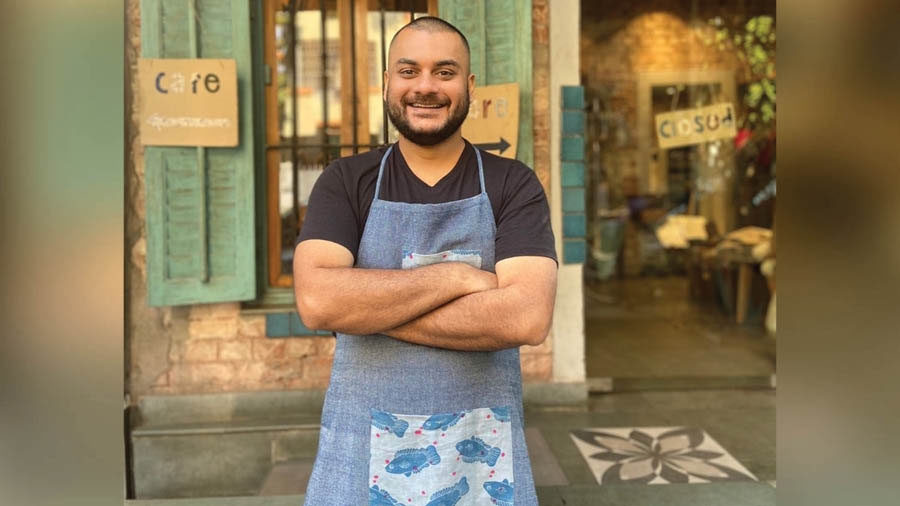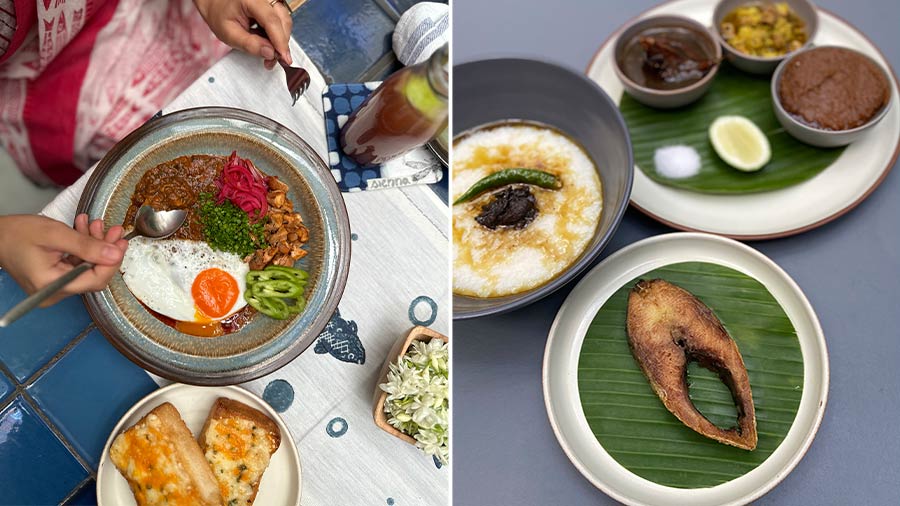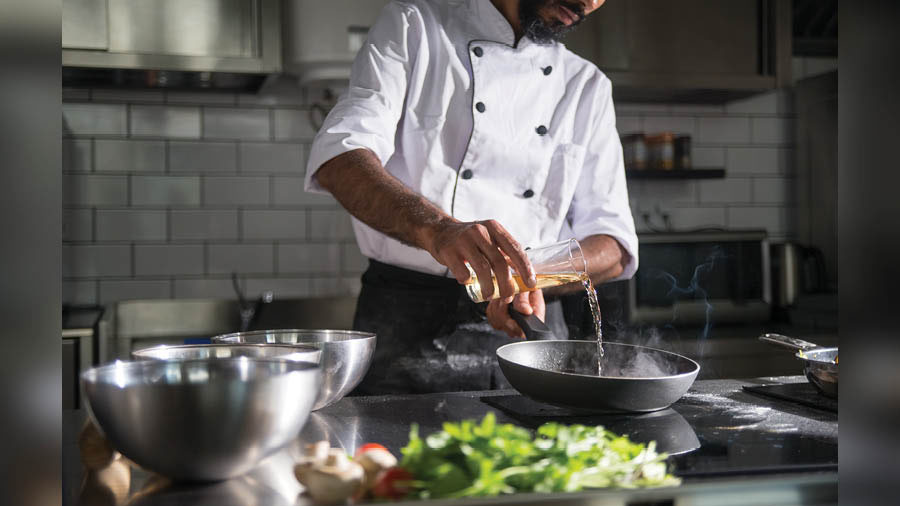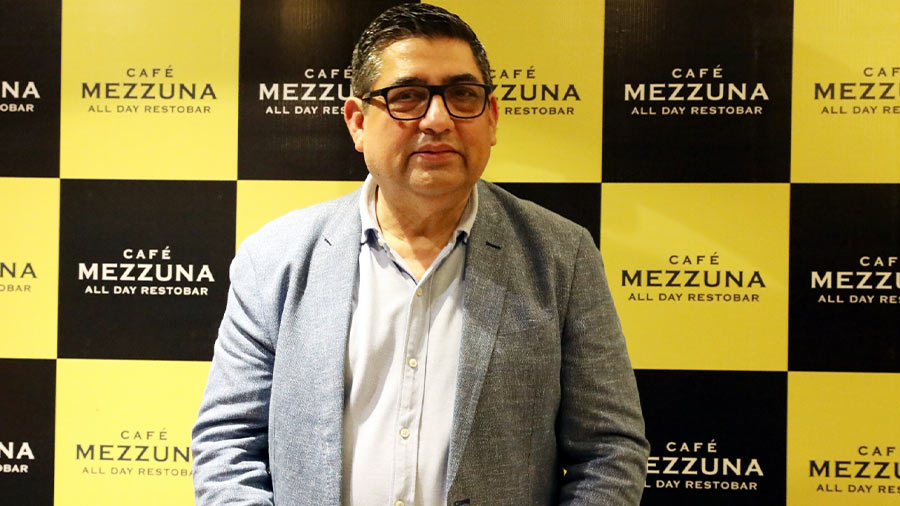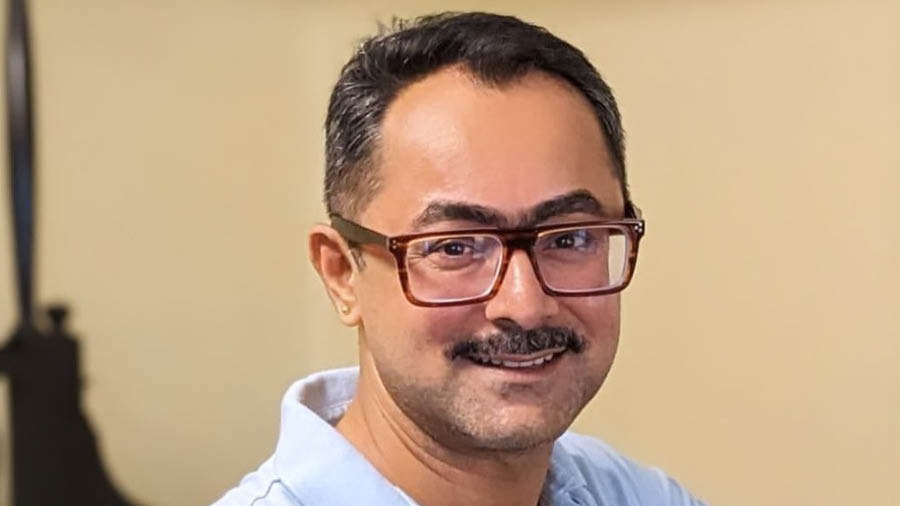Executive chef at Sienna Store and Cafe, Auroni Mookerjee's experience of Durga Puja is different from many others. Not only is the festive season one of the busiest times of the year for the chef, but having grown up as a probashi Bangali means that memories of Pujos past are not really the quintessential Kolkata experience.
My Kolkata sat down with Chef Auroni — savouring Sienna's delicious new Puja menu — to revisit special moments of Durga Puja in Delhi and Kolkata, talk about traditions and Pujo plans for 2023, and more.
My Kolkata: Do you usually spend Durga Puja in Kolkata?
Auroni Mookerjee: Durga Puja in Kolkata is a different experience for me because I grew up as a probashi. We lived in Mayur Vihar (Delhi), which was like a second CR Park, and our housing society and neighbouring housing societies all had pandals. I remember coming to Kolkata for Pujo once as a child, which was a regulated affair. Now, of course, I stay in Kolkata for Pujo for different reasons — it’s one of the busiest times for the restaurant and we don’t really get to leave the kitchen.
What’s the Kolkata Pujo experience like for you now?
We’re lucky that the para has a lot of pujos. The team and I look forward to the pandal here (Hindustan Park Durga Puja) because it echoes a lot of the design sensibilities and aesthetics that Sienna is about and they are known to be an art and design-heavy pandal.
For me, the idea of Pujo has become about how we can be there for the community and help them take their celebrations to the next level. I think the way people look forward to certain pandals, they also look forward to our menu. So, for us, Pujo comes with a lot of expectations.
Is there a pandal or place you definitely visit, or something you make time for?
I make time for friends and family and for me that’s what Durga Puja has always been about. If you grow up as a probashi, it’s not so much about the pandal-hopping, but the community coming together. In Delhi, everyone meets up for Diwali, in Goa it’s for Christmas and in Kerala for Onam. For me, Pujo has always been about meeting loved ones and making time for family.
The one thing I haven’t had enough time to do though, is find a place to have a good bhog. I want to know where’s a good place to have bhog in town.
Do you have special outfits for the festive season or places you like to shop?
I occasionally like to break into my panjabi. On any one of the days, the team likes to dress up — they wear their new saris and outfits and I like to wear my panjabi. I am one of those uniform people, so when I know someone makes my fit, I stick with it and I always shop at Anokhi. But Shuli (Ghosh) also makes me some great outfits.
Do you have a special Durga Puja tradition or ritual?
Durga Puja has always been about food for me. I’d always go and see what the maharaj was cooking behind the pandal. I didn’t care about the performances or programmes, but about what was going on in the kitchen. I think making bhog is one of those crafts, just like the old-school biye bari catering’s style of cooking, that is slowly going away. I don’t think people encourage it the same way anymore. I would suppose that if certain homes have artisans who come all the way from the countryside to make the idols, the same is probably true for the cook as well. The maharaj and the catering kitchen have techniques and skills that are very different from how your dida or thakuma would cook in their kitchens. So, I am always curious to explore the food side of things.
The other thing, which I think is also a very probashi experience, is the Ananda Mela. There would be food stalls and games for kids and people coming together. It was a staple of Durga Puja.
Since you have been in Kolkata, have you found a special Pujo-time tradition you’ve kept up with?
I hop on to other people’s traditions (laughs). In recent times, I usually join Avi (Sienna Cafe head chef Avinandan Kundu) and the boys from his para and we drive down to Kolaghat, and go eat a meal at one of the dhabas. I mean, it’s not a particularly scenic drive, and again being a probashi, I don’t truly understand the sentiment but we enjoy it.
The other thing that I look forward to is dinners with the team here at Sienna. We operate late during this time and every night the team orders something different for dinner. They get better budgets from me for Pujo so there’s a different menu for every night (laughs). There’s always a conversation about “ajke ei dokaan theke biryani ta order korte hobe” (we have to order biryani from this shop today), or the tarka will come from a specific place, or a double egg double chicken roll from a specific roll person. They plan the whole thing and the order will sometimes be placed in the morning so it reaches on time keeping in mind the evening rush.
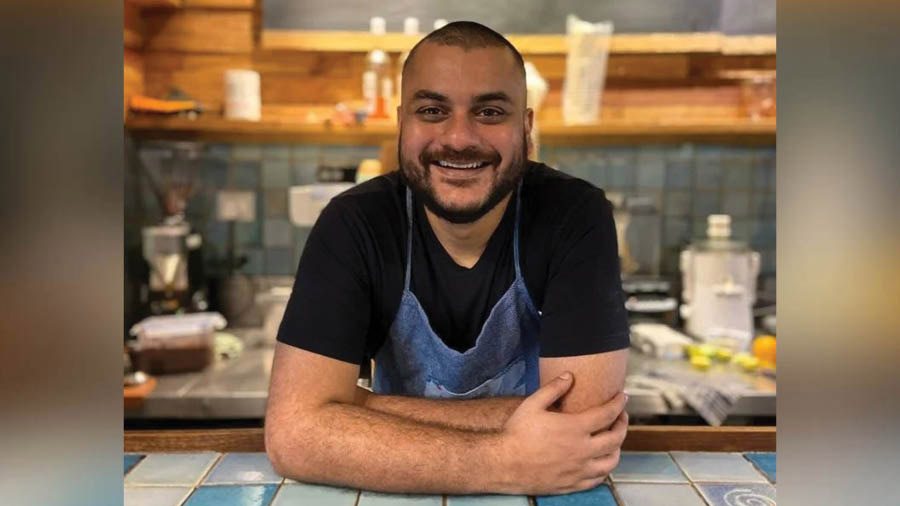
Having 10 hands is probably something every chef would wish for, says Auroni
Tell us about a special Durga Puja memory
Strangely, the most fun Pujo I’ve had recently was the pandemic year. We realised that the city will not be able to get together for bhog and for me as a chef and for us as a kitchen team, that was a travesty. It is our favourite ritual during Puja and I know people look forward to bhog as well. So, that year we did bhog home deliveries.
We had already decided we wanted to do something with Bong Eats that year, but then that collaboration turned into us taking their recipes and creating bhog menus for these deliveries. There was a different menu every day, including khichudi — which was my favourite. I think for us it was memorable because we travelled the entire city and did those deliveries ourselves, and I got to explore parts of the city we’ve never been to. For example, north Kolkata is a part of the city I’d never been to. We went to Salt Lake and beyond Garia and every day we were doing about 300-plus orders.
It was really heartening because we got calls from New York to deliver bhog for a grandparent living by themselves in the city and they said they trusted us to deliver the food and make sure they have a good Pujo. We got orders from other cities in the country from kids wanting to arrange bhog deliveries for parents in Kolkata. There were no pandals and everyone was stuck at home doing nothing beyond maybe buying new clothes online and making some paayesh. So, just the fact that we could take that one aspect of Pujo and deliver something, even if it was to just 300 homes, was special. We had a lot more demands, but that was all the production we could manage, but it was really special.
At Sienna, we always talk about the community being our first inspiration and that year we really walked our talk. Sometimes when running a business, you have to make small compromises, but that year we really were fully here for the community.
What is one power of Durga you wish you had?
I think I already have one or two of them, and do a good job of it, which is having a grumpy side — Chef Auroni is the unofficial ‘Chief Grumpus’ of the Sienna kitchen — and the ‘all-seeing eye’. The team keeps wondering sometimes how I spot the smallest things.
Jokes aside though, I wish I had 10 hands. I think any chef would want that because it would make life much easier for us.
